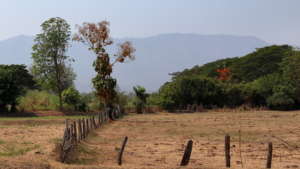Drought: The World’s Costliest Natural Disaster

Drought is the world’s most expensive natural disaster. It causes an estimated loss of between $6 and $8 billion each year. As temperatures increase and erratic weather becomes normal in much of the world, droughts are increasing in frequency and severity in both developed and developing nations. Drought costs cannot be measured with certainty in poor nations, where their impact on those without insurance and who practice subsistence farming is often life-threatening.
The first-ever global conference on drought and drought policy took place this March in Geneva. The meeting exposed the disparity between national drought policies and the implementation of such policies on the ground. Despite recognition that a country cannot be forced to develop or implement disaster relief policies, conference participants issued a declaration urging all nations to do just that. The declaration was accompanied by a 10-step program for recommended policy action. The program, which is based on US drought preparation policies, combines crisis prevention and response, drought resilience, and scientific recommendations.
It includes steps such as:
- appointing a national task force on drought
- consulting with all stakeholders, from rural communities to top policymakers
- resolving water-related conflicts and fostering cooperation
- collect data on drought vulnerability
- build public awareness of drought policy through education and science
- evaluate and address drought research needs
Natural resource management plays an important role in drought management. Drought-resistant seeds, soil conservation techniques, and food storage facilities can minimize the effects of drought on vulnerable farming communities. But the policies of many countries often do not amount to much relief for their inhabitants. Recent droughts have had a massive impact on people all over the world. Droughts in the Horn of Africa and Sahel have had devastating consequences for food production, food security, and malnutrition in those regions, while droughts in the US have caused global food prices to rise, contributing to social and political unrest.
Since 2011, natural disasters have cost over $100 billion each year. That figure accounts primarily for insured losses in rich countries, and does not cover losses in poor countries, where such measurements are unavailable. Millions of the world’s poor continue to experience hunger on a daily basis as a result of drought and other natural disasters.
According to the International Organization for Migration, drought is the second biggest instigator of migration.
– Kat Henrichs
Sources: IRIN, IRIN
Photo: Follow the Piper
